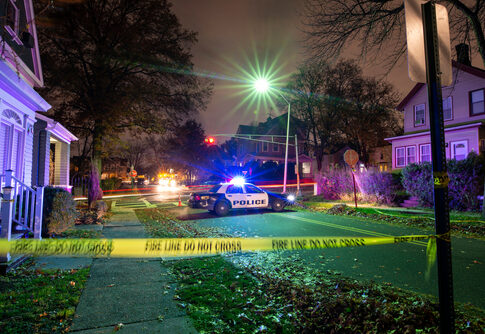Chicago’s homicide statistics have become a political Rorschach test—what you see depends on what you want to believe, but behind the numbers is a city still struggling with violence that no press conference can erase.
Chicago’s Homicide Numbers: Political Messaging vs. Street Reality
Illinois Governor J.B. Pritzker proudly touts a reduction in Chicago’s homicide rate, crediting his administration’s security policies and a progressive approach that blends community violence interruption with police support. Yet, walk the streets of Englewood or Austin after dark, and the sense of vulnerability is palpable—numbers on a spreadsheet rarely capture the fear that grips a city’s neighborhoods. The governor’s assertion that homicides have been cut in half in recent years draws applause in press briefings, but for many families, the pain of loss and anxiety of daily life remain unchanged.
The study Maher referenced was in Chicago: Most of the crime is committed by "superpredators": maybe three percent of the population in certain zip codes… https://t.co/sm9XzmrZTf
— AKA Lee and Zee (@foullonL) October 27, 2025
Community activists and law enforcement officials find themselves at odds over the root causes and the best remedies for Chicago’s persistent violence. Progressive advocates point to new investments in youth programs and outreach initiatives, contending that years of punitive policing did little to address generational poverty and trauma. Meanwhile, seasoned officers argue that soft-on-crime policies and a revolving-door justice system embolden repeat offenders, undermining any progress made by headline-friendly community efforts. For every report of a program that “interrupts” violence, there’s a counter-narrative from police unions or residents who say criminals act with impunity, knowing consequences are minimal and arrests rarely stick.
Numbers Don’t Always Tell the Whole Story
Chicago’s official homicide statistics, though improved when compared to historic highs, still outpace those of most major American cities. This statistical victory is often presented without context—a drop from a record year can appear dramatic, but it doesn’t mean the city is safe. Data can be massaged: crime reclassification, changes in reporting standards, and selective timeframes all play roles in shaping a narrative that fits political goals. Residents in high-crime areas are acutely aware that a “decline” in homicides can still mean dozens of murders in a single neighborhood over a summer, and that the trauma lingers long after the headlines fade. For them, the lived experience of gunshots at night and memorials on street corners contradicts the optimism of official reports.
J.D. Pritzker's Statistics on Chicago Crime Rates which he just Lied about on National Television on Friday. "We Don't Need Trump's Help".
FNC’s Bret Baier challenges Pritzker for denying Chicago has the highest murder rate of largest US cities.
"Well, here’s a map –– most… pic.twitter.com/BjjPRd1GZL
— Michael Wigley (@michael_wi63247) October 27, 2025
Media coverage often amplifies these competing realities. One evening, a news segment highlights a new youth center opening on the South Side, with officials promising transformation. The next morning, a fresh shooting dominates the airwaves—another family grieving, another block on edge. The cyclical nature of violence, intervention, and political spin can create a kind of collective fatigue, where even positive developments are greeted with skepticism. Residents who have seen decades of policy pivots know that change, if it comes at all, comes slow and with many setbacks. The city’s homicide numbers may fluctuate, but the perception of insecurity remains stubbornly high.
The Clash Between Policy, Perception, and Lived Experience
The disconnect between official narratives and street-level reality fuels frustration and distrust. Public safety becomes a proxy war for broader ideological battles, with progressives and conservatives both claiming the moral high ground. Progressive leaders defend their focus on root causes, arguing that more policing without social investment is a recipe for repeating history. Conservative critics counter that downplaying enforcement and accountability leads to chaos, leaving law-abiding citizens at the mercy of emboldened criminals. Both sides wield data like swords, but the wounds on communities are real and persistent.
“An illegal alien from Nicaragua grabbed a woman on the North Side last week, bashed her head into the sidewalk and raped her. If that had been your wife, would you want ICE to deport him?”
Chicago Mayor Johnson: “Alright, let’s move on…”pic.twitter.com/iKa8qaFqYp
— Defiant L’s (@DefiantLs) October 27, 2025
Chicago’s experience is a cautionary tale for any city seeking easy wins in the war on violent crime. Political leaders may shape the narrative, but residents know the truth in their bones. A mother who won’t let her child walk to school, a shop owner installing bulletproof glass, or a pastor organizing midnight patrols—these are the voices that seldom make it into the governor’s press releases. The debate over Chicago’s homicide numbers is more than a battle over statistics; it is a struggle over whose reality counts, and whether political promises can ever be enough to restore a sense of genuine safety.
Sources:
Chicago on Alert: The Reality Behind Pritzker’s Homicide Numbers



Exactly!!! Crime going down certainly does not mean a place is safe! Why doesn’t anyone call him on that at a Press Conference?